|
|
|
| Home > Artist Gallery > Classic Masterpieces Art
Gallery |
| |
|
|
|
|
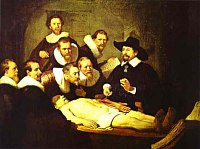
   |
|
The
Anatomy Lecture of Dr. Nicolaes Tulp
1632
di Rembrandt
oil on canvas
The original painting is
displayed at the The Hague, Maurithius
Rent

|
|
Cod. Art. 172
Dim. 60x90 cm
Available
now:
Buy |
|
|
|
|
|
|
|
|
|
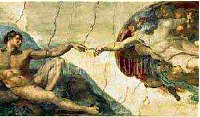
   |
|
La
Creazione di Adamo
1510
di Michelangelo Buonarroti
oil on canvas
The original painting is
displayed at the Cappella Sistina nel Vaticano
Rent

|
|
Cod. Art. 204
Dim. 60x90 cm
Available
now:
Buy |
|
|
|
|
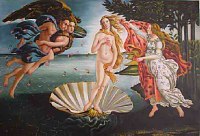
   |
|
La
Nascita di Venere
1485
del Botticelli
oil on canvas
The original painting is
displayed at the Galleria degli Uffizi, Firenze
Rent

|
|
Cod. Art. 245
Dim. 60x90 cm
Available
now:
Buy |
|
|
|
|
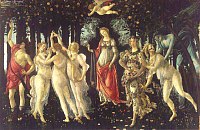
   |
|
La
Primavera
1477-78
del Botticelli
oil on canvas
The original painting is
displayed at the Galleria degli Uffizi, Firenze
Rent

|
|
Cod. Art. 306
Dim. 60x90 cm
Available
now:
Buy |
|
|
|
|
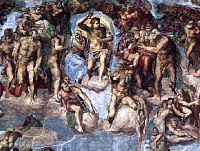
   |
|
Il
Giudizio Finale
1535-41
di Michelangelo Buonarroti
oil on canvas
The original painting is
displayed at the Cappella Sistina nel Vaticano
Rent

|
|
Cod. Art. 359
Dim. 60x90 cm
Available
now:
Buy |
|
|
|
|
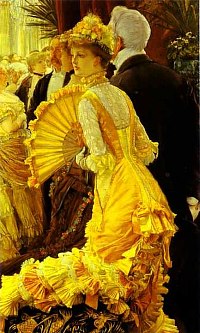
   |
|
The Ball
1878
di James Tissot
oil on canvas
The original painting is
displayed at the
Musée du Louvre, Paris
Rent

|
|
Cod. Art. 388
Dim. 60x90 cm
Available
now:
Buy |
|
|
|
|
|
|
|
|
|
|
|
|
|
|
|
|
|
|
|
|
|
|
|
|
|
|
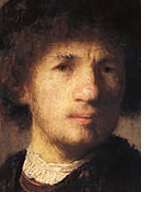 Rembrandt Rembrandt
Rembrandt was born in Leiden on July 15, 1606- his full name Rembrandt Harmenszoon van
Rijn. He was the son of a miller. Despite the fact that he came from a family of
relatively modest means, his parents took great care with his education. Rembrandt began
his studies at the Latin School, and at the age of 14 he was enrolled at the University of
Leiden. The program did not interest him, and he soon left to study art - first with a
local master, Jacob van Swanenburch, and then, in Amsterdam, with Pieter Lastman, known
for his historical paintings. After six months, having mastered everything he had been
taught, Rembrandt returned to Leiden, where he was soon so highly regarded that although
barely 22 years old, he took his first pupils. One of his students was the famous artist
Gerrit Dou.
Rembrandt moved to Amsterdam in 1631; his marriage in 1634 to Saskia van
Uylenburgh, the cousin of a successful art dealer, enhanced his career, bringing him in
contact with wealthy patrons who eagerly commissioned portraits. An exceptionally fine
example from this period is the Portrait of Nicolaes Ruts (1631, Frick Collection, New
York City). In addition, Rembrandt's mythological and religious works were much in demand,
and he painted numerous dramatic masterpieces such as The Blinding of Samson (1636,
Städelsches Kunstinstitut, Frankfurt). Because of his renown as a teacher, his studio was
filled with pupils, some of whom (such as Carel Fabritius) were already trained artists.
In the 20th century, scholars have reattributed a number of his paintings to his
associates; attributing and identifying Rembrandt's works is an active area of art
scholarship.
In contrast to his successful public career, however, Rembrandt's family life was marked
by misfortune. Between 1635 and 1641 Saskia gave birth to four children, but only the
last, Titus, survived; her own death came in 1642- at the age of 30. Hendrickje Stoffels,
engaged as his housekeeper about 1649, eventually became his common-law wife and was the
model for many of his pictures. Despite Rembrandt's financial success as an artist,
teacher, and art dealer, his penchant for ostentatious living forced him to declare
bankruptcy in 1656. An inventory of his collection of art and antiquities, taken before an
auction to pay his debts, showed the breadth of Rembrandt's interests: ancient sculpture,
Flemish and Italian Renaissance paintings, Far Eastern art, contemporary Dutch works,
weapons, and armor. Unfortunately, the results of the auction - including the sale of his
house - were disappointing.
These problems in no way affected Rembrandt's work; if anything, his artistry increased.
Some of the great paintings from this period are The Jewish Bride (1665), The Syndics of
the Cloth Guild (1661, Rijksmuseum, Amsterdam), Bathsheba (1654, Louvre, Paris), Jacob
Blessing the Sons of Joseph (1656, Staatliche Gemäldegalerie, Kassel, Germany), and a
self-portrait (1658, Frick Collection). His personal life, however, continued to be marred
by sorrow. His beloved Hendrickje died in 1663, and his son, Titus, in 1668- only 27 years
of age. Eleven months later, on October 4, 1669, Rembrandt died in Amsterdam.
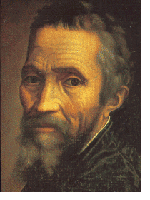 Michelangelo
Buonarroti Michelangelo
Buonarroti
was born on March 6, 1475 in the village of Caprese, Italy. He was one of the most
important artists of the Italian Renaissance, a period when the arts and sciences
flourished. Michelangelo became an apprentice to prominent Florentine painter, Domenico
Ghirlandaio at the age of 12, but soon began to study sculpture instead. He attracted the
attention and patronage of Lorenzo de Medici, who was ruler of Florence until 1494. At age
23, Michelangelo completed his magnificent "Pieta," a marble statue that shows
the Virgin Mary grieving over the dead Jesus. He began work on the colossal figure of
"David" in 1501, and by 1504 the sculpture (standing at 4.34m/14 ft 3 in tall)
was in place outside the Palazzo Vecchio. The statue became a symbol for the new republic
that had replaced Medici rule.
Michelangelo portrayed "David" partly as the ideal man, partly as an adolescent
youth. Unlike predesessors by other sculptors which depict David with the grissly head of
the giant under his foot, Michalangelo poses David at the moment he faces the giant, the
deed before him. He believed that this was David's moment of greatest courage.
From 1508 until 1512 Michelangelo worked on his most famous project, the
ceiling of the Sistine Chapel in the Vatican. He had always considered himself a sculptor
and resisted painting the Sistine with characteristic vehemence: "I cannot live under
pressures from patrons, let alone paint." Only the power of the Pope Julius II forced
him into the reluctant achievement of the world's greatest single fresco. He covered the
ceiling with paintings done on wet plaster, showing nine scenes from the Old Testament.
Michelangelo later painted "The Last Judgment" on the altar wall of the Sistine
Chapel.
Toward the end of his life, Michelangelo became more involved in architecture
and poetry. In 1546 he was made chief architect of the partly finished St. Peter's Church
in Rome, where the Pieta is now kept.
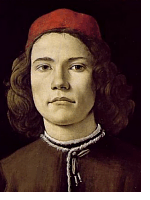 BOTTICELLI BOTTICELLI
Alessandro Botticelli was born in Florence in 1444 or 1445, the fourth son of Mariano di
Vanni Filipepi, a tanner. Alessandro's nickname was derived from the one given to his
eldest brother Giovanni, who, because of his corpulence, was called "Il
Botticello" (little barrel). It is believed that Botticelli was apprenticed as a
goldsmith before being sent, probably in the beginning of the 1460s, to Fra Filippo Lippi
in order to study painting.
Since 1470, Botticelli ran his own workshop in Florence and, in 1472, he became a member
of the St. Luke's Guild. His early woks were mostly small religious pieces. In 1470, he
was commissioned to paint Fortitude (c.1470) for the Florentine Tribunate di Mercatanzia.
In 1474, his first monumental work St. Sebastian (1474) was mounted on a pillar in the
Florentine church of Santa Maria Maggiore. He painted Adoration of the Magi (c.1475), on
which he depicted members of Medici clan, the ruling family of the Florence, also his
Portrait of Giuliano de' Medici (c.1476-1477) was well known. He had a lasting fame as a
painter of Madonnas. Among his best are Madonna and Child with Eight Angels (Tondo
Raczynski) (c.1478), Madonna del Libro (c.1480), Madonna of the Magnificat (c.1480-1481),
Madonna of the Pomegranate (c.1487), Madonna del Padiglione (c.1493).
In 1480, Botticelli was commissioned to paint the fresco St. Augustine (1480) for the
Ognissanti church. At that period he also created another fresco, which did not survived.
In 1481, Botticelli was commissioned along with Domenico Ghirlandaio, Cosimo Rosseli and
Pierro Perugino by Pope Sixtus IV to decorate his cappella magna, which was later named
the Sistine Chapel after him, with frescos. He created The Temptation of Christ
(1481-1482), Scenes from the Life of Moses (1481-1482) and The Punishment of Korah
(1481-1482).
In the next years he painted The Story of Nastagio degli Onesti (1482-1483), a series of 4
frescos based on the novella in Boccaccio's Decameron for the decoration of the Pucci
villa, and his most famous mythologic works Primavera (c.1482) and The Birth of Venus
(c.1485). He created several great altarpieces for Florentine churches, such as Virgin and
Child Enthroned between Saint John the Baptist and Saint John the Evangelist (Bardi
altarpiece) (1484), Virgin and Child with Four Angels and Six Saints (San Barnabas
altarpiece) (c.1487), Coronation of the Virgin with the Saints John the Evangelist,
Augustine, Jerome and Eligius. (San Marco altarpiece) (c. 1490-1492).
In the 1490s, Botticelli became influenced by the Dominican monk Girolamo Savonarola, in
whose sermons and writings he conjured up visions of the Apocalypse at the imminent turn
of the century and warned people to repent and embrace asceticism. Botticelli's style
became more severe and strict. In the late 1480s, the artist made illustrations for
Dante's Divine Comedy. Among his last known works are Calumny of Apelles (c.1494-1495),
The Story of Virginia (c.1496-1504), The Story of Lucretia (c.1496-1504), Mystic Nativity
(1500) and St. Zenobiuspanels (1500-1505). The last years of Botticelli's life are
unknown. He died on the 17th of May, 1510 in Florence and was buried in the Ognissanti
cemetery.
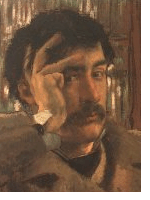 TISSOT TISSOT
Jacques Joseph Tissot was born in 1836 in Nantes, France into the family of a merchant. In
c. 1856-57 he came to Paris with the desire to become a painter. He entered the Academy of
Fine Arts (Ecole des Beaux-Arts) and studied in the studios of Ingres and Flandrin. Much
of his education, though, Tissot received informally, through friends and acquaintances
among avant-garde artists and writers. Among his influential contacts were Edouard Manet,
Edgar Degas, and James McNeill Whistler. The latter evidently had a strong impression on
the young artist, shortly after meeting Whistler Tissot anglicized his first name to
"James". He was a close friend of Degas; Degas painted an interesting portrait
of Tissot. But they later quarreled, and Tissot refused to participate in the
Impressionists exhibitions.
Tissot achieved official recognition for his work rather quickly. First he painted
historical costume pieces, but in about 1864 he turned to scenes of contemporary life,
usually with attractive stylish women. Both the subject and Tissot's manner of painting
had a success with the collectors, and by 1870 the painter was earning a substantial
income. In 1870, the Franco-Prussian war started, followed by the civil war, Parisian
Commune, in 1871. The government severely suppressed the rising, killing nearly twenty
thousand Commune members in the streets of Paris. James Tissot, a Commune sympathizer, had
to leave the country to escape imprisonment. He took refuge in London, where he lived from
1871 to 1882.
In England he painted portraits and proceeded with his favorite subject - scenes from the
life of society, but adapted to the English tastes, and soon gained a high reputation
among the social elite. "It's ironical that the greatest painter of social life in
Victorian times was not English, but French - Jacques Joseph Tissot, or James Tissot, as
he liked to be known." (Victorian Painting by Christopher Wood. Bulfinch Press. 2000)
"…during the brief eleven years that he worked in England , achieved both
artistic and financial success, painting what are now recognized as his best pictures. The
first of his large-scale social scenes was Too Early, exhibited at the Royal Academy in
1873. The painter Louise Jopling, a friend of Tissot, described it as 'a new departure in
art, this witty representation of modern life.' He followed this with the brilliant Ball
on Shipboard of 1874, and Hush, the last of his large pictures of this type, shown at the
RA in 1875. No English artist could equal Tissot's brilliant technique, or his combination
of style, elegance and wit, and all three pictures were instantly successful."
(Victorian Painting by Christopher Wood. Bulfinch Press. 2000)
Despite the success Tissot was attacked by most serious critics, including Oscar Wilde,
Henry James and Ruskin, who saw in his paintings color photographs of the vulgar nouveaux
riches. This contemptuous appraisal did not stop his paintings selling.
About 1876, Tissot met Mrs. Kathleen Newton, a beautiful Irish divorcée, who became his
model and mistress. He immortalized her in his paintings Quiet, Chrysanthemums and many
others. After her death of tuberculosis, in 1882, he returned to France.
He was no longer interested in painting 'society', his emotional state made him retreat
into religion. He visited the Holy Land in 1886-87 and in 1889 for careful geographical
and ethnographic studies, and made hundreds of watercolor paintings illustrating the
Bible. His watercolors on the New Testament were called "a revolution in religious
art". Tissot later made a series of illustrations for the Old Testament as well, but
these ones were not as highly appreciated as the earlier ones. Many of Tissot's Bible
watercolors belong to the Brooklyn Museum in Brooklyn, N.Y. Tissot's biblical
illustrations are his most significant work of his last years. He died at Buillon,
Department of Doubs, France on August 3, 1902.
|
|